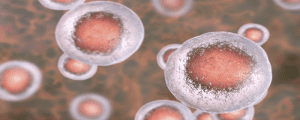WHAT IS
Regenerative Medicine for Musculoskeletal Injury
Discover the option of Regenerative Medicine also know as Stem Cell Therapy for Musculoskeletal Injury and how it is being used to manage painful and uncomfortable symptoms.
WHAT IS
Regenerative Medicine for Musculoskeletal Injury
Discover the option of Regenerative Medicine also know as Stem Cell Therapy for Musculoskeletal Injury and how it is being used to manage painful and uncomfortable symptoms.
Regenerative Medicine for Musculoskeletal Injury – Discover a new alternative way to help manage the symptoms and potentially improve performance.
Whether you have an injury caused by recreational or sports activity, the symptoms impact your daily function. Regenerative Medicine, also known as Stem Cell Therapy for musculoskeletal injury, is becoming an alternative option for those seeking relief and strengthening the performance of their targeted muscles and joints.
Some of these possibilities of improvement are:
Pain relief
Increased strength of muscles and joints
Improved mobility and range of motion
Daily activity improvement
Anti-inflammatory properties
Tissue repair & restoration

Whether you have an injury caused by recreational or sports activity, the symptoms impact your daily function. Regenerative Medicine, also known as Stem Cell Therapy for musculoskeletal injury, is becoming an alternative option for those seeking relief and strengthening the performance of their targeted muscles and joints.
Some of these possibilities of improvement are:
Pain relief
Increased strength of muscles and joints
Improved mobility and range of motion
Daily activity improvement
In the field of orthopedics, there are a number of conditions that are notoriously difficult to treat. From muscle tears to injured tendons and ligaments, many issues can only be addressed effectively through the use of invasive procedures such as surgery. Complete functional recovery remains challenging, especially because these tissue groups have a very low capacity to regenerate, and thus, heal.
Orthopedic injuries can result from a broad range of factors. From sports to overuse and the simple process of aging, tissue can become compromised when stretched beyond its limits or otherwise aggravated. While some injuries may heal with rest, physical therapy, and lifestyle modifications, others persist indefinitely. Living with such an injury can cause immense pain, restrict mobility, and prevent an individual from performing their daily activities. Although surgical interventions and painkillers, either over-the-counter or prescription, are available, many patients seek a less-invasive yet still effective alternative without side effects.
In the case of conditions and injuries that leave a lasting impact and are difficult to heal, such as orthopedic injuries, regenerative medicine therapy is a commonly researched option. Regenerative therapies have the scientific ability to repair damaged cells and tissues by helping the body’s natural repair kit work more effectively and by regenerating new cells. Stem cells, specifically, have the unique ability of self-renewal, which enables them to become virtually any type of cell.
While the potential applications for Stem Cell Therapy for musculoskeletal injury in the world of orthopedics are vast, here are some of the conditions for which it has demonstrated the most noteworthy results:
- Muscle recovery: It can be challenging to make a complete, functional recovery from a skeletal muscle injury, especially due to the fact that scar tissue formation may delay healing. Stem cells have the ability to differentiate into muscle cells and control the immune system’s response, thereby aiding in accelerated muscle repair and healing.
- Meniscus: Despite its small size, the meniscus can create an immense amount of pain when injured or torn. Abrupt twisting movements can lead to both partial and complete tears, which are common in soccer players and other athletes who do a lot of running.
In the case of total tears, surgery is usually needed to remove the torn tissue, followed by a rehabilitation period. There is little to no potential for regeneration in most areas of the meniscus, but stem cells have been shown to promote healing when strategically placed into the cartilage. - Tendon and ligaments: While tendons and ligaments may heal on their own, the tissue formed after an injury is typical of poorer quality than the original tissue. In some cases, grafts are used to facilitate functionality, but issues such as tissue rejection and risk of infection arise. Stem cells have been studied to repair areas such as the Achilles tendon, and have indicated the ability to regenerate tendon tissue.
- Intervertebral disc and spine: Degenerative disc disease and other spinal issues can cause persistent back pain. While there are many therapies available to address these problems, medical interventions for ongoing back pain commonly include surgical interventions, which are often invasive.
Stem cell injections have been used in a number of spinal applications. They are used to slow disc degeneration and form cartilage-like tissue to regenerate intervertebral discs. Stem cells can also be directed to become neurons and promote the regeneration of cells damaged by spinal cord injuries. - Rotator cuff: More than 3 million cases of rotator cuff injuries are diagnosed in the U.S. each year. The rotator cuff is the group of tissues that connects the muscle to the bone around the shoulder joint. It occurs frequently in people who perform repeated shoulder motions, including tennis players. While rest, physical therapy, and corticosteroid injections may be used, surgery may be needed in cases of ongoing pain. Stem cell therapy is a potential option to help heal tears in the rotator cuff, thanks to their ability to achieve tissue regeneration.
For the conditions above and many others that are challenging to treat effectively, stem cell therapy is a worthwhile alternative to surgery to explore. It may also be beneficial for patients who have not responded to other therapies but are seeking relief from pain, improved mobility, and an overall improvement in the quality of life.
Regenerative Medicine is still considered an experimental procedure and not approved by the FDA. Patients must consider realistic expectations in their research and possible therapy options.
How Stemedix Helps You Heal
Professional Medical Care
Our Board-Certified Physicians specialize in regenerative medicine. They stay abreast of the latest developments in stem cell research. Each patient is screened and reviewed before being approved for therapy.
Advanced Therapy
Each patient is thoroughly reviewed to ensure their safety for treatment. The physicians will then determine potential benefit candidacy. If approved, a customized treatment plan is offered for the patient.
Specialized Care
Stemedix can help coordinate patients with necessary wheelchair transportation, medical equipment, and Care Giving services as needed during their stay. Your Care Coordinator is available for questions and assistance.

Latest Articles on Stem Cell Therapy
Understanding Osteoarthritis
Medical Review: Dr. Gerald Mastaw, MD – Board-Certified PhysicianLast Updated: October 2025 What Is Osteoarthritis? Osteoarthritis (OA) is the most common form of arthritis.It occurs when the protective cartilage that cushions the ends of bones gradually breaks down....
The Science Behind Stem Cell Therapy for Spinal Cord Injury
Stem cell therapy in Saint Petersburg, FL, offers an experimental option for individuals living with a confirmed spinal cord injury. At Stemedix, we provide personalized stem cell treatments designed to address your specific condition while supporting your overall...
Mesenchymal Stem Cell Therapy for Disc-Related Low Back Pain: Current Evidence
Low back pain is one of the most common health problems worldwide. It affects quality of life, limits work and daily activities, and creates a significant economic burden. In many adults, especially those over age 50, a key driver of this pain is lumbar intervertebral...




 St. Petersburg, Florida
St. Petersburg, Florida
